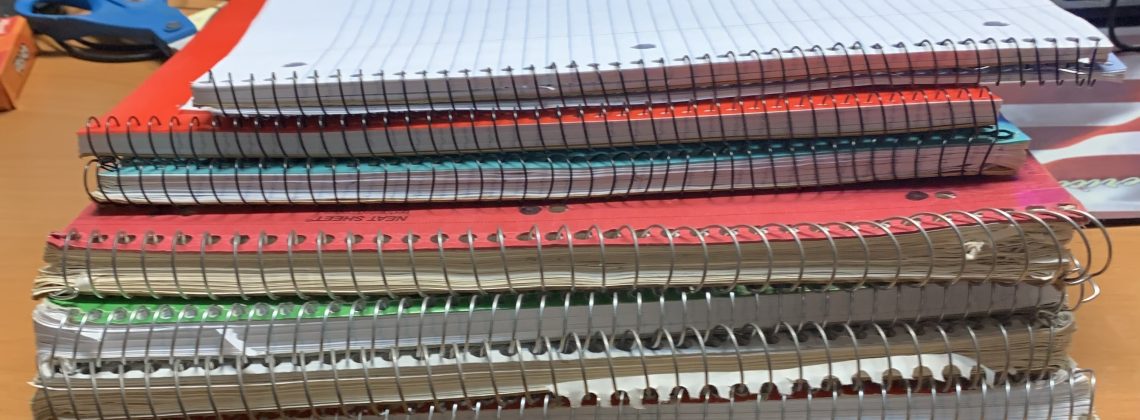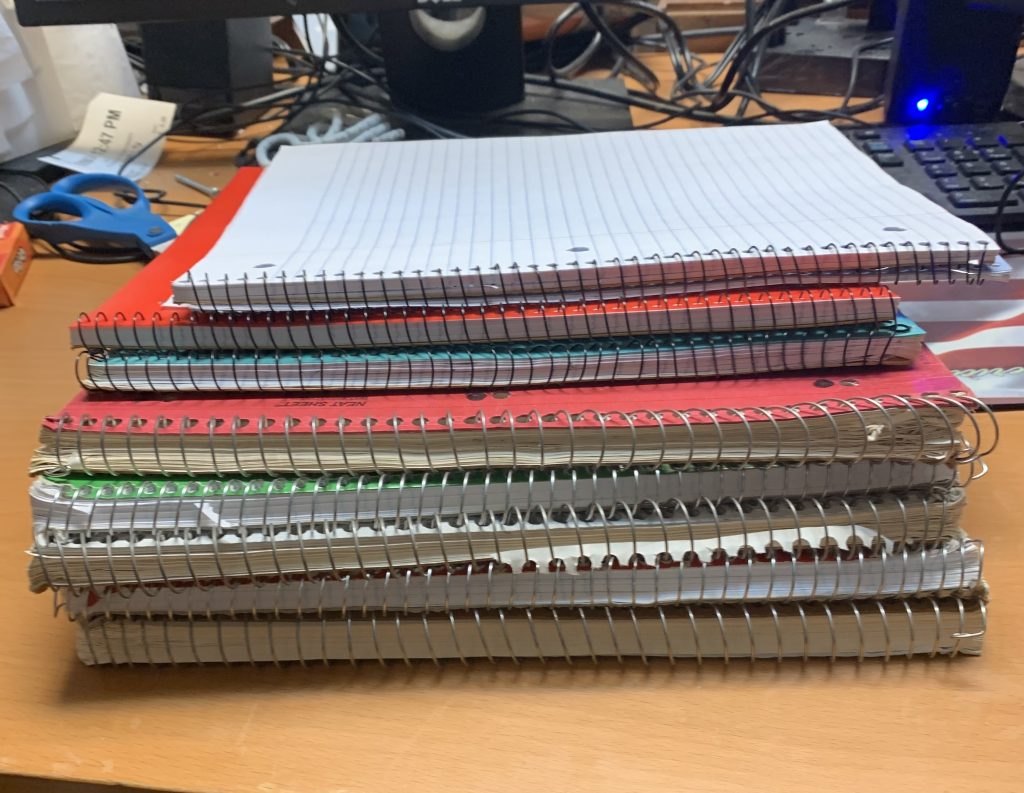

The picture above are just a few of my writing notebooks. I fill these notebooks with ideas for books, blog posts, op-eds, magazine articles, book chapters, etc. They include early drafts of published pieces, grant deadline reminders, diary-like entries on things spiritual and intellectual, first drafts of blurbs, and a bunch of other random stuff. Occasionally someone will give me fancy moleskin notebooks (is that what they are called?) as a gift, but I prefer the old fashioned spiral notebooks.
I resonate with a lot of Cristina Henriquez thoughts in “I Would Be Lost As a Writer If It Weren’t For Notebooks.”
Here is a taste:
I started carrying that notebook with me everywhere. I sat on airplanes and wrote, I sat in hotel rooms and wrote, I waited in my car in the preschool pick-up line and wrote. The notebook was easy. It was portable, it didn’t need time to restart, it didn’t need to be charged, it didn’t need to be shut down in airport security lines and removed from my bag. I simply turned back the cover, and it was ready. I opened it, and somehow, immediately I was more open, too.
Maybe it mattered that it wasn’t a notebook I bought. It wasn’t precious to me in any way, I didn’t choose it lovingly, thinking it would be the place where I started a new book. And because of that, writing in it was free of pressure. The notebook was a place where I could experiment, cross things out, mess around. It was, in other words, gloriously unofficial, and it offered the sense that writing, instead of being work, was something more akin to play.
Maybe it mattered that writing by hand, in journals, is how I first discovered I loved writing, way back when I was in high school. I used to sit in my bedroom, recording the day or writing terrible poems or penning diatribes about the world, and I enjoyed it so much—trying to string words together in ways that seemed novel or true—that by the time I left for college, I thought I might have found what I wanted to do for the rest of my life.
Returning to both the same medium and method after so many years was a return to an original impulse. It was remembering why and how I fell in love with writing to begin with.
Maybe the notebook functioned like a trick. An important trick, it turned out. It was easy to convince myself that no one would ever read what I wrote in a notebook that I stored in a drawer next to my bed. It felt entirely private, not meant for consumption by anyone other than me. After all, what was I going to do? Send my editor a notebook full of handwritten thoughts? And if no one was going to read it, I could write anything—no matter how tangential or weird or out-and-out bad—without fear of judgement.
Maybe it was that writing by hand, on paper, was slower than typing. My mind is outpaced by typing. With my fingers frenetically tap-dancing atop a keyboard, thoughts don’t have the same time to form, and I don’t have the same time to follow them. Writing by hand slows me down just enough that I can catch the smoke trails of ideas before they disappear, and if I follow them, they lead me down paths that otherwise might have gone unexplored.
Maybe it was that by writing by hand, on paper, I was physically closer to the words as they emerged. I could feel my hand on the paper alongside the words as I formed them. I tended to hunch over the notebook, my face hovering only inches above it, watching the ink bloom into letters, watching the characters bloom, watching the story bloom, and huddled close like that, the rest of the world fell away. There was no possible other world—no software, no websites—aside from my mind and the sound of the words as they slithered through it and my hand moving silently across the page.
Read the entire piece here.